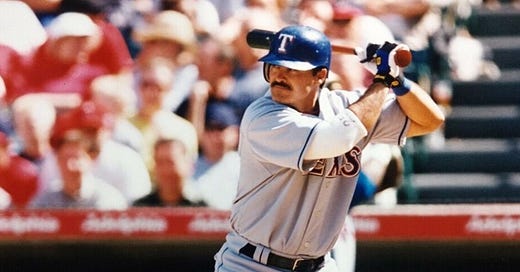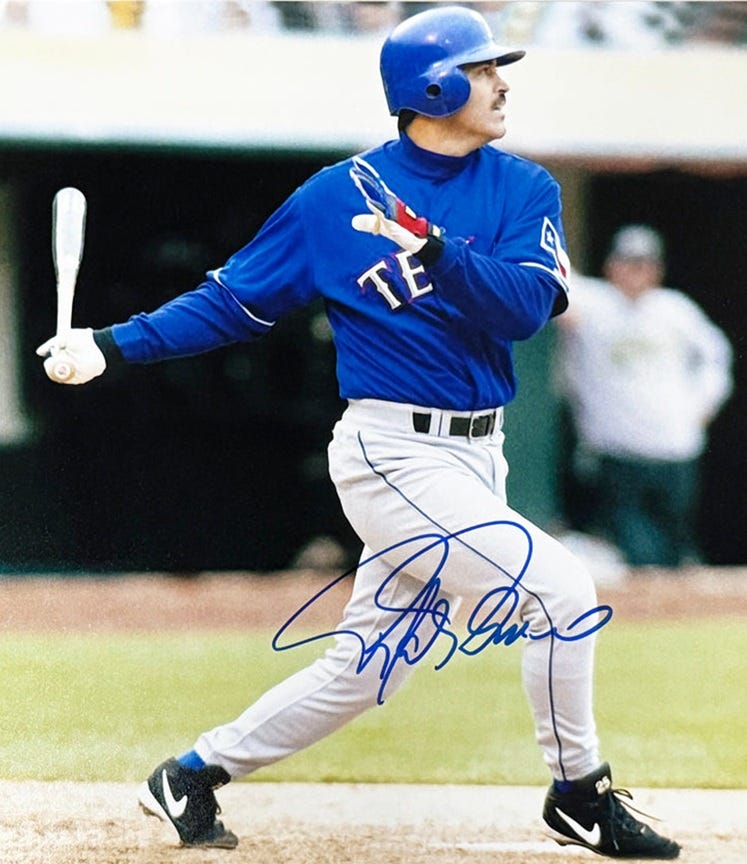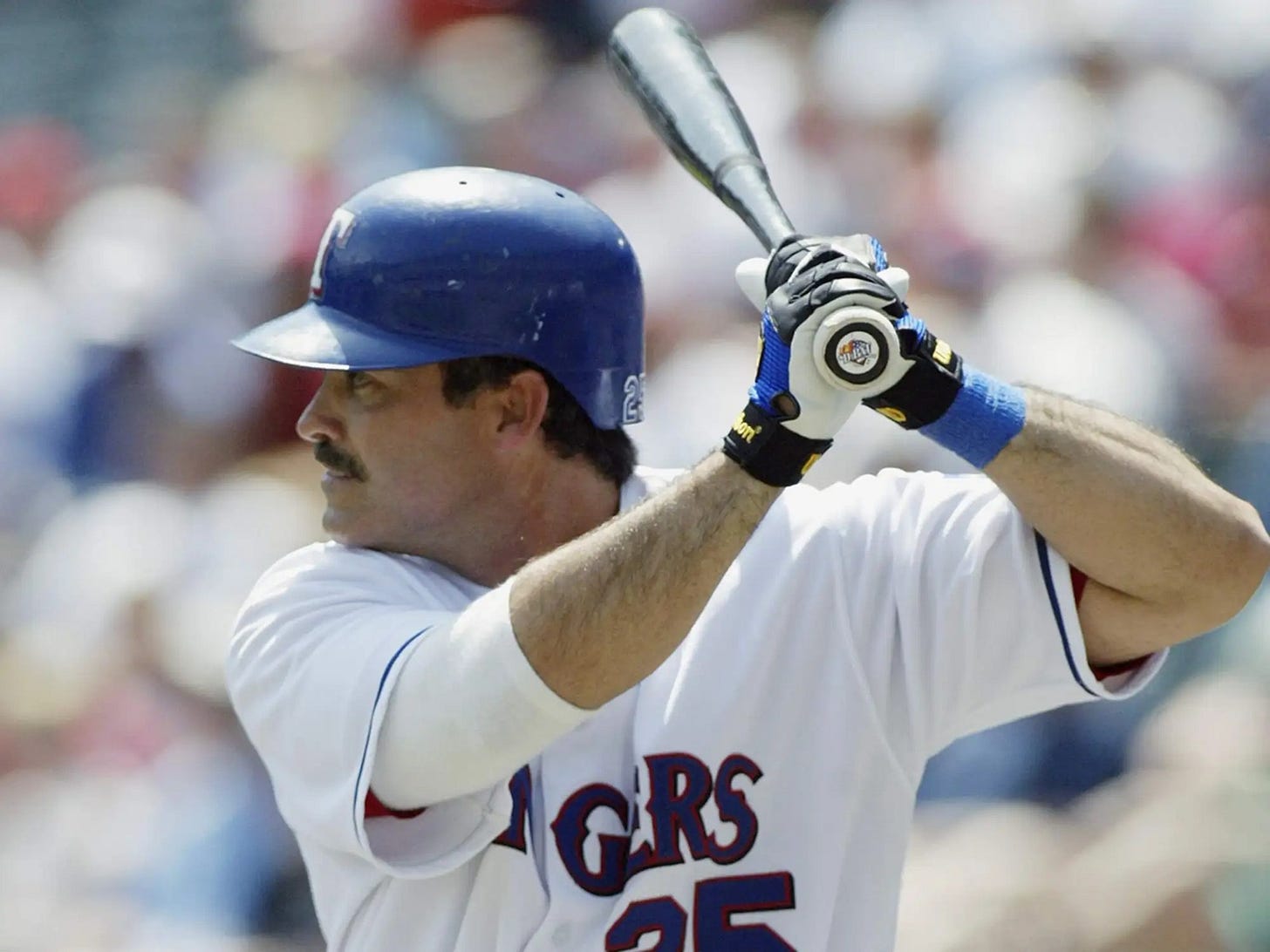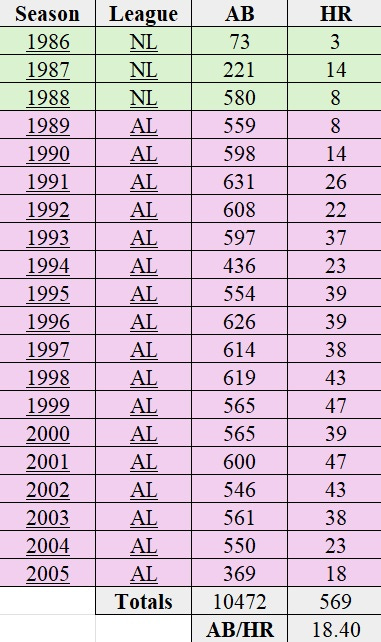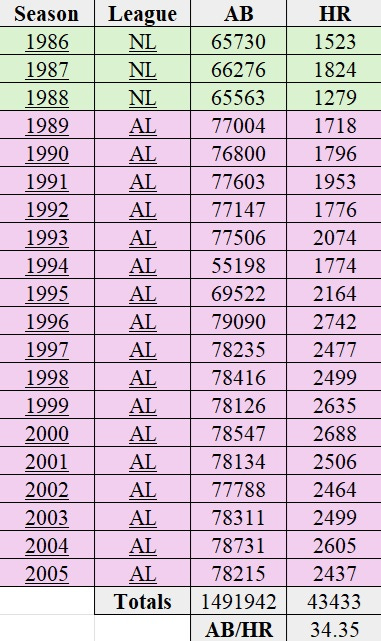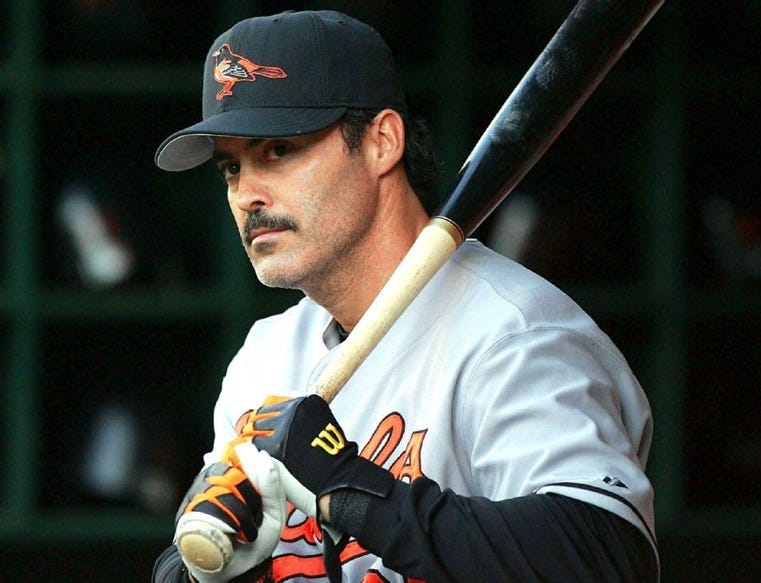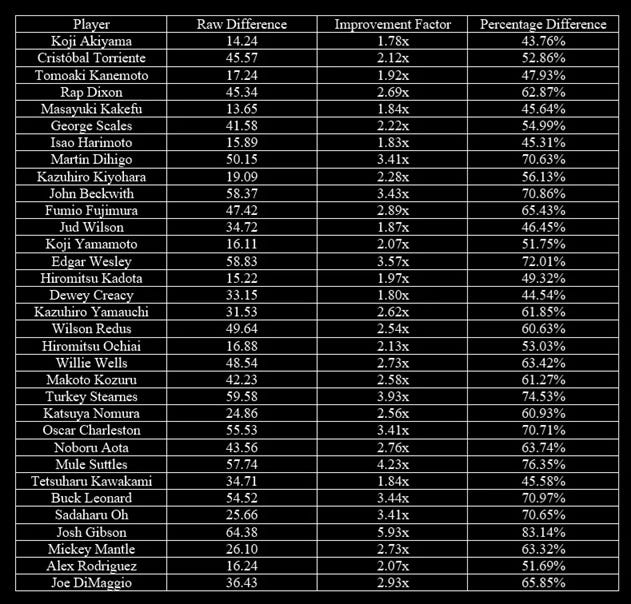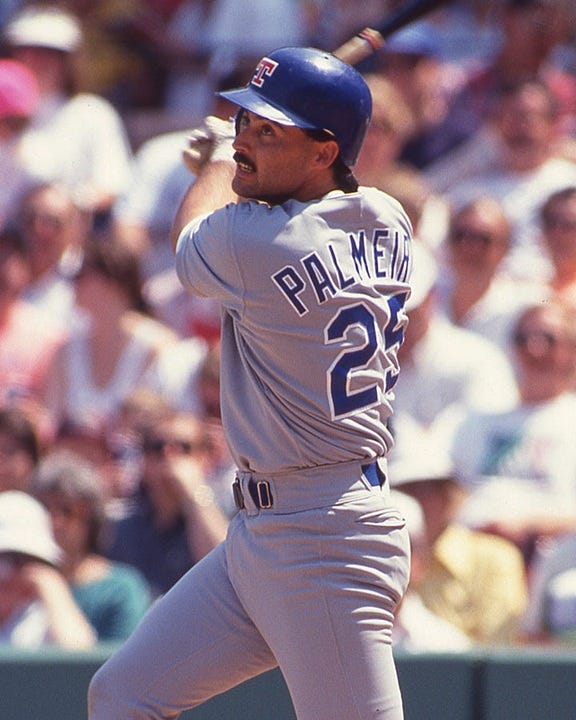This project aims to determine the greatest home run hitter of all time by comparing each slugger’s statistics to the average of their era using three formulas. The final adjusted stats will then be used to compare them head-to-head with other all-time greats.
Rafael Palmeiro will be the next legendary MLB slugger examined in this study. For a detailed biography of Palmeiro, please click here.
Before analyzing Palmeiro's career numbers, it's essential to recognize his accomplishments as a hitter. Let's examine his rankings in key hitting statistics throughout his career. Palmeiro appeared on the MLB leaderboards in the following categories:
1988: #10 (.307)
1990: #7 (.319)
1991: #7 (.322)
1991: #6 (.922)
1993: #10 (.926)
1999: #5 (1.050)
1991: #2 (115)
1993: #3 (124)
1990: #4 (191)
1991: #3 (203)
1991: #2 (336)
1993: #5 (331)
1995: #3 (323)
1996: #10 (342)
1999: #6 (356)
1990: #6 (136)
1988: #6 (41)
1991: #1 (49)
1993: #8 (40)
1994: #10 (32)
1993: #8 (37)
1995: #5 (39)
1999: #4 (47)
2001: #8 (47)
2002: #5 (43)
1991: #2 (78)
1993: #5 (79)
1995: #6 (71)
1996: #8 (81)
1999: #10 (78)
2001: #9 (101)
2002: #8 (104)
1991: #4 (129)
1993: #7 (128)
1995: #6 (123)
1999: #6 (152)
1991: #4 (277)
1995: #10 (14.21)
1999: #6 (12.02)
2001: #8 (12.77)
2002: #5 (12.70)
Rafael Palmeiro’s 1991 season was his best. With 9 leaderboard appearances, it showcases unmatched consistency and versatility, backed by elite rankings: #1 in Doubles (49), #2 in Total Bases (336), #2 in Runs Scored (115), and #2 in Extra Base Hits (78), plus #3 in Hits (203). His .322 average (#7), 336 Total Bases (#2), and 129 Runs Created (#4) reflect a complete offensive profile—excelling in contact, power, and run production.
Now that we have a clear understanding of Palmeiro's accomplishments, we can proceed with the career analysis. According to Baseball Reference, Palmeiro’s official statistics reveal a total of 569 home runs over 10,472 at-bats resulting in an average of at-bats per home run 18.40 (AB/HR).
Rafael Palmeiro played in the National League (NL) from 1986 to 1988, but spent the majority of his career in the American League (AL) from 1989 to 2005. When aggregating the statistics from each of the seasons Palmeiro competed in, the league totals include 1,491,942 at-bats and 43,433 home runs, resulting in an average of 34.35 at-bats per home run (AB/HR).
With this data, we can evaluate how Palmeiro’s performance compared to the average NL/AL hitter of his era.
Raw Difference: 15.95
Formula: League Average – Player Career AverageImprovement Factor: 1.87x
Formula: League Average / Player Career AveragePercentage Difference: 46.43%
Formula: (League Average – Player Career Average) / League Average × 100%
AB/HR
Palmeiro’s AB/HR of 18.40 means he hit a home run roughly once every 18 at-bats. Compared to the league’s 34.35 AB/HR, he was clearing the fences far more frequently than the average hitter of his era. That’s a significant edge—about half the at-bats needed per homer compared to the league norm.
Raw Difference
The raw difference of 15.95 quantifies how much better Palmeiro was per at-bat in terms of home run production. This isn’t just a small gap; it’s a substantial leap, suggesting he wasn’t just good—he was consistently outperforming his peers over a long career.
Improvement Factor
The improvement factor of 1.87x tells us Palmeiro was almost twice as efficient at hitting home runs as the average NL/AL player during his time. Flip it around, and it’s like saying the league needed nearly double the at-bats to match his home run output per opportunity. That’s a standout stat for a power hitter.
Percentage Difference
A 46.43% improvement over the league average is massive. Nearly half the league’s AB/HR rate being shaved off by Palmeiro’s performance underscores how far above the pack he was. In a stat-driven sport like baseball, a 46% edge in any category is a loud statement.
In our initial case study, we analyzed the careers of prominent Japanese and Negro League sluggers, alongside MLB greats Mickey Mantle, Alex Rodriguez, and Joe DiMaggio for comparison.
Now, let's compare Palmeiro’s career statistics against these baseball legends to gain a clearer perspective on how he stacks up.
Rafael Palmeiro’s statistics closely mirror those of Jud Wilson (34.72/1.87x/46.45%). According to Baseball Reference the Negro League legend’s official statistics reveal a total of 77 home runs over 3,082 at-bats resulting in an average of 40.03 at-bats per home run (AB/HR).
Among the league leaders in home runs during the 1990s, we have analyzed the power-hitting careers of the following players:
Vladimir Guerrero (14.40/1.79x/44.23%)
Vinny Castilla (13.04/1.61x/37.95%)
Tino Martinez (12.08/1.58x/36.54%)
Shawn Green (10.13/1.47x/31.94%)
Sammy Sosa (20.59/2.42x/58.73%)
Ryne Sandberg (13.89/1.47x/31.84%)
Ron Gant (16.41/1.82x/44.95%)
Rob Deer (22.42/2.33x/57.06%)
Rafael Palmeiro (15.95/1.87x/46.43%) ranks behind Sammy Sosa and Rob Deer in key metrics (improvement factor/percentage difference), but remains in the top tier, ahead of the remaining players.
If you find this content valuable and would like to support the ongoing studies and articles, your contributions via CashApp are truly appreciated.
Your support helps fund the tools, research, and time dedicated to these projects. Every contribution, no matter the size, plays an important role in keeping this work going.
If you're unable to contribute financially, sharing this article on your social media (X, Facebook, etc.), emailing it to a friend, or texting the link to a fellow baseball fan is just as valuable.
Thank you for your support!

